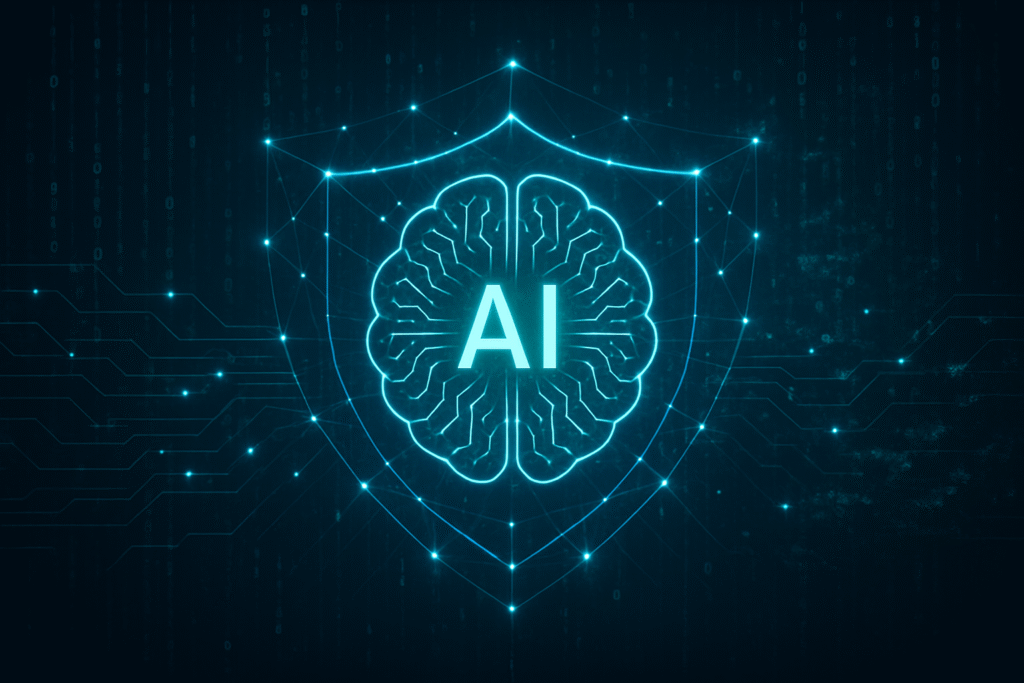
In an unprecedented leap for digital defense, agentic Artificial Intelligence is rapidly transitioning from a theoretical concept to a practical, transformative force within cybersecurity. This new wave of AI, characterized by its ability to reason, adapt, and act autonomously within complex contexts, promises to fundamentally alter how organizations detect, respond to, and proactively defend against an ever-evolving landscape of cyber threats. Moving beyond the rigid frameworks of traditional automation, agentic AI agents are demonstrating capabilities akin to highly skilled digital security analysts, capable of independent decision-making and continuous learning, marking a pivotal moment in the ongoing arms race between defenders and attackers.
The immediate significance of agentic AI lies in its potential to address some of cybersecurity's most pressing challenges: the overwhelming volume of alerts, the chronic shortage of skilled professionals, and the increasing sophistication of AI-driven attacks. By empowering systems to not only identify threats but also to autonomously investigate, contain, and remediate them in real-time, agentic AI offers the promise of dramatically reduced dwell times for attackers and a more resilient, adaptive defense posture. This development is poised to redefine enterprise-grade security, shifting the paradigm from reactive human-led responses to proactive, intelligent machine-driven operations.
The Technical Core: Autonomy, Adaptation, and Real-time Reasoning
At its heart, agentic AI in cybersecurity represents a significant departure from previous approaches, including conventional machine learning and traditional automation. Unlike automated scripts that follow predefined rules, or even earlier AI models that primarily excelled at pattern recognition, agentic AI systems are designed with a high degree of autonomy and goal-oriented decision-making. These intelligent agents operate with an orchestrator—a reasoning engine that identifies high-level goals, formulates plans, and coordinates various tools and sub-agents to achieve specific objectives. This allows them to perceive their environment, reason through complex scenarios, act upon their findings, and continuously learn from every interaction, mimicking the cognitive processes of a human analyst but at machine speed and scale.
The technical advancements underpinning agentic AI are diverse and sophisticated. Reinforcement Learning (RL) plays a crucial role, enabling agents to learn optimal actions through trial-and-error in dynamic environments, which is vital for complex threat response. Large Language Models (LLMs), such as those from OpenAI and Google, provide agents with advanced reasoning, natural language understanding, and the ability to process vast amounts of unstructured security data, enhancing their contextual awareness and planning capabilities. Furthermore, Multi-Agent Systems (MAS) facilitate collaborative intelligence, where multiple specialized AI agents work in concert to tackle multifaceted cyberattacks. Critical to their continuous improvement, agentic systems also incorporate persistent memory and reflection capabilities, allowing them to retain knowledge from past incidents, evaluate their own performance, and refine strategies without constant human reprogramming.
This new generation of AI distinguishes itself through its profound adaptability. While traditional security tools often rely on static, signature-based detection or machine learning models that require manual updates for new threats, agentic AI continuously learns from novel attack techniques. It refines its defenses and adapts its strategies in real-time based on sensory input, user interactions, and external factors. This adaptive capability, coupled with advanced tool-use, allows agentic AI to integrate seamlessly with existing security infrastructure, leveraging current security information and event management (SIEM) systems, endpoint detection and response (EDR) tools, and firewalls to execute complex defensive actions autonomously, such as isolating compromised endpoints, blocking malicious traffic, or deploying patches.
Initial reactions from the AI research community and industry experts have been overwhelmingly positive, tempered with a healthy dose of caution regarding responsible deployment. The global agentic AI in cybersecurity market is projected for substantial growth, with a staggering compound annual growth rate (CAGR) of 39.7%, expected to reach $173.5 million by 2034. A 2025 Cyber Security Tribe annual report indicated that 59% of CISO communities view its use as "a work in progress," signaling widespread adoption and integration efforts. Experts highlight agentic AI's ability to free up skilled cybersecurity professionals from routine tasks, allowing them to focus on high-impact decisions and strategic work, thereby mitigating the severe talent shortage plaguing the industry.
Reshaping the AI and Cybersecurity Industry Landscape
The rise of agentic AI heralds a significant competitive reshuffling within the AI and cybersecurity industries. Tech giants and specialized cybersecurity firms alike stand to benefit immensely, provided they can successfully integrate and scale these sophisticated capabilities. Companies already at the forefront of AI research, particularly those with strong foundations in LLMs, reinforcement learning, and multi-agent systems, are uniquely positioned to capitalize on this shift. This includes major players like Microsoft (NASDAQ: MSFT), which has already introduced 11 AI agents into its Security Copilot platform to autonomously triage phishing alerts and assess vulnerabilities.
The competitive implications are profound. Established cybersecurity vendors that fail to adapt risk disruption, as agentic AI solutions promise to deliver superior real-time threat detection, faster response times, and more adaptive defenses than traditional offerings. Companies like Trend Micro, with its unveiled "AI brain"—an autonomous cybersecurity agent designed to predict attacks, evaluate risks, and mitigate threats—and CrowdStrike (NASDAQ: CRWD), whose Charlotte AI Detection Triage boasts 2x faster detection triage with 50% less compute, are demonstrating the immediate impact of agentic capabilities on Security Operations Center (SOC) efficiency. Startups specializing in agentic orchestration, AI safety, and novel agent architectures are also poised for rapid growth, potentially carving out significant market share by offering highly specialized, autonomous security solutions.
This development will inevitably disrupt existing products and services that rely heavily on manual human intervention or static automation. Security Information and Event Management (SIEM) systems, for instance, will evolve to incorporate agentic capabilities for automated alert triage and correlation, reducing human analysts' alert fatigue. Endpoint Detection and Response (EDR) and Extended Detection and Response (XDR) platforms will see their autonomous response capabilities significantly enhanced, moving beyond simple blocking to proactive threat hunting and self-healing systems. Market positioning will increasingly favor vendors that can demonstrate robust, explainable, and continuously learning agentic systems that seamlessly integrate into complex enterprise environments, offering true end-to-end autonomous security operations.
Wider Significance and Societal Implications
The emergence of agentic AI in cybersecurity is not an isolated technological advancement but a critical development within the broader AI landscape, aligning with the trend towards more autonomous, general-purpose AI systems. It underscores the accelerating pace of AI innovation and its potential to tackle some of humanity's most complex challenges. This milestone can be compared to the advent of signature-based antivirus in the early internet era or the more recent widespread adoption of machine learning for anomaly detection; however, agentic AI represents a qualitative leap, enabling proactive reasoning and adaptive action rather than merely detection.
The impacts extend beyond enterprise security. On one hand, it promises a significant uplift in global cybersecurity resilience, protecting critical infrastructure, sensitive data, and individual privacy from increasingly sophisticated state-sponsored and criminal cyber actors. By automating mundane and repetitive tasks, it frees up human talent to focus on strategic initiatives, threat intelligence, and the ethical oversight of AI systems. On the other hand, the deployment of highly autonomous AI agents raises significant concerns. The potential for autonomous errors, unintended consequences, or even malicious manipulation of agentic systems by adversaries could introduce new vulnerabilities. Ethical considerations surrounding AI's decision-making, accountability in the event of a breach involving an autonomous agent, and the need for explainability and transparency in AI's actions are paramount.
Furthermore, the rapid evolution of agentic AI for defense inevitably fuels the development of similar AI capabilities for offense. This creates a new dimension in the cyber arms race, where AI agents might battle other AI agents, demanding constant innovation and vigilance. Robust AI governance frameworks, clear rules for autonomous actions versus those requiring human intervention, and continuous monitoring of AI system behavior will be crucial to harnessing its benefits while mitigating risks. This development also highlights the increasing importance of human-AI collaboration, where human expertise guides and oversees the rapid execution and analytical power of agentic systems.
The Horizon: Future Developments and Challenges
Looking ahead, the near-term future of agentic AI in cybersecurity will likely see a continued focus on refining agent orchestration, enhancing their reasoning capabilities through advanced LLMs, and improving their ability to interact with a wider array of security tools and environments. Expected developments include more sophisticated multi-agent systems where specialized agents collaboratively handle complex attack chains, from initial reconnaissance to post-breach remediation, with minimal human prompting. The integration of agentic AI into security frameworks will become more seamless, moving towards truly self-healing and self-optimizing security postures.
Potential applications on the horizon are vast. Beyond automated threat detection and incident response, agentic AI could lead to proactive vulnerability management, where agents continuously scan, identify, and even patch vulnerabilities before they can be exploited. They could revolutionize compliance and governance by autonomously monitoring adherence to regulations and flagging deviations. Furthermore, agentic AI could power highly sophisticated threat intelligence platforms, autonomously gathering, analyzing, and contextualizing global threat data to predict future attack vectors. Experts predict a future where human security teams act more as strategists and overseers, defining high-level objectives and intervening only for critical, nuanced decisions, while agentic systems handle the bulk of operational security.
However, significant challenges remain. Ensuring the trustworthiness and explainability of agentic decisions is paramount, especially when autonomous actions could have severe consequences. Guarding against biases in AI algorithms and preventing their exploitation by attackers are ongoing concerns. The complexity of managing and securing agentic systems themselves, which introduce new attack surfaces, requires innovative security-by-design approaches. Furthermore, the legal and ethical frameworks for autonomous AI in critical sectors like cybersecurity are still nascent and will need to evolve rapidly to keep pace with technological advancements. The need for robust AI safety mechanisms, like NVIDIA's NeMo Guardrails, which define rules for AI agent behavior, will become increasingly critical.
A New Era of Digital Defense
In summary, agentic AI marks a pivotal inflection point in cybersecurity, promising a future where digital defenses are not merely reactive but intelligently autonomous, adaptive, and proactive. Its ability to reason, learn, and act independently, moving beyond the limitations of traditional automation, represents a significant leap forward in the fight against cyber threats. Key takeaways include the dramatic enhancement of real-time threat detection and response, the alleviation of the cybersecurity talent gap, and the fostering of a more resilient digital infrastructure.
The significance of this development in AI history cannot be overstated; it signifies a move towards truly intelligent, goal-oriented AI systems capable of managing complex, critical tasks. While the potential benefits are immense, the long-term impact will also depend on our ability to address the ethical, governance, and security challenges inherent in deploying highly autonomous AI. The next few weeks and months will be crucial for observing how early adopters integrate these systems, how regulatory bodies begin to respond, and how the industry collectively works to ensure the responsible and secure deployment of agentic AI. The future of cybersecurity will undoubtedly be shaped by the intelligent agents now taking center stage.
This content is intended for informational purposes only and represents analysis of current AI developments.
TokenRing AI delivers enterprise-grade solutions for multi-agent AI workflow orchestration, AI-powered development tools, and seamless remote collaboration platforms.
For more information, visit https://www.tokenring.ai/.






